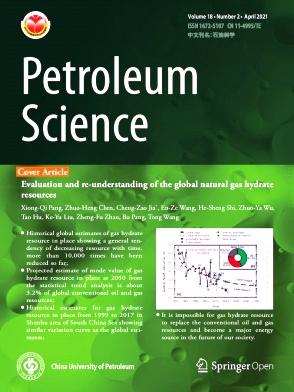A novel optimization scheme for structure and balance of compound balanced beam pumping units using the PSO, GA, and GWO algorithms
IF 6
1区 工程技术
Q2 ENERGY & FUELS
引用次数: 0
Abstract
The beam pumping unit (BPU) remains the most stable and reliable equipment for crude oil lifting. Despite its simple four-link mechanism, the structural design of the BPU presents a constrained single-objective optimization problem. Currently, a comprehensive framework for the structural design and optimization of compound balanced BPUs is lacking. Therefore, this study proposes a novel structural design scheme for BPUs, aiming to meet the practical needs of designers and operators by sequentially optimizing both the dynamic characteristics and balance properties of the BPUs. A dynamic model of compound balanced BPU was established based on D'Alembert's principle. The constraints for structural dimensions were formulated based on the actual operational requirements and design experience with BPUs. To optimize the structure, three algorithms were employed: the particle swarm optimization (PSO) algorithm, the genetic algorithm (GA), and the gray wolf optimization (GWO) algorithm. Each newly generated individuals are regulated by constraints to ensure the rationality of the outcomes. Furthermore, the integration of three algorithms ensures the increased likelihood of attaining the global optimal solution. The polished rod acceleration of the optimized structure is significantly reduced, and the dynamic characteristics of the up and down strokes are essentially symmetrical. Additionally, these three algorithms are also applied to the balance optimization of BPUs based on the measured dynamometer card. The calculation results demonstrate that the GWO-based optimization method exhibits excellent robustness in terms of structural optimization by enhancing the operational smoothness of the BPU, as well as in balance optimization by achieving energy conservation. By applying the optimization scheme proposed in this paper, the CYJW7-3-23HF type of BPU was designed, achieving a maximum polished rod acceleration of ±0.675 m/s2 when operating at a stroke of 6 min−1. When deployed in two wells, the root-mean-square (RMS) torque was minimized, reaching values of 7.539 kN·m and 12.921 kN·m, respectively. The proposed design method not only contributes to the personalized customization but also improves the design efficiency of compound balanced BPUs.
求助全文
约1分钟内获得全文
求助全文
来源期刊

Petroleum Science
地学-地球化学与地球物理
CiteScore
7.70
自引率
16.10%
发文量
311
审稿时长
63 days
期刊介绍:
Petroleum Science is the only English journal in China on petroleum science and technology that is intended for professionals engaged in petroleum science research and technical applications all over the world, as well as the managerial personnel of oil companies. It covers petroleum geology, petroleum geophysics, petroleum engineering, petrochemistry & chemical engineering, petroleum mechanics, and economic management. It aims to introduce the latest results in oil industry research in China, promote cooperation in petroleum science research between China and the rest of the world, and build a bridge for scientific communication between China and the world.
 求助内容:
求助内容: 应助结果提醒方式:
应助结果提醒方式:


